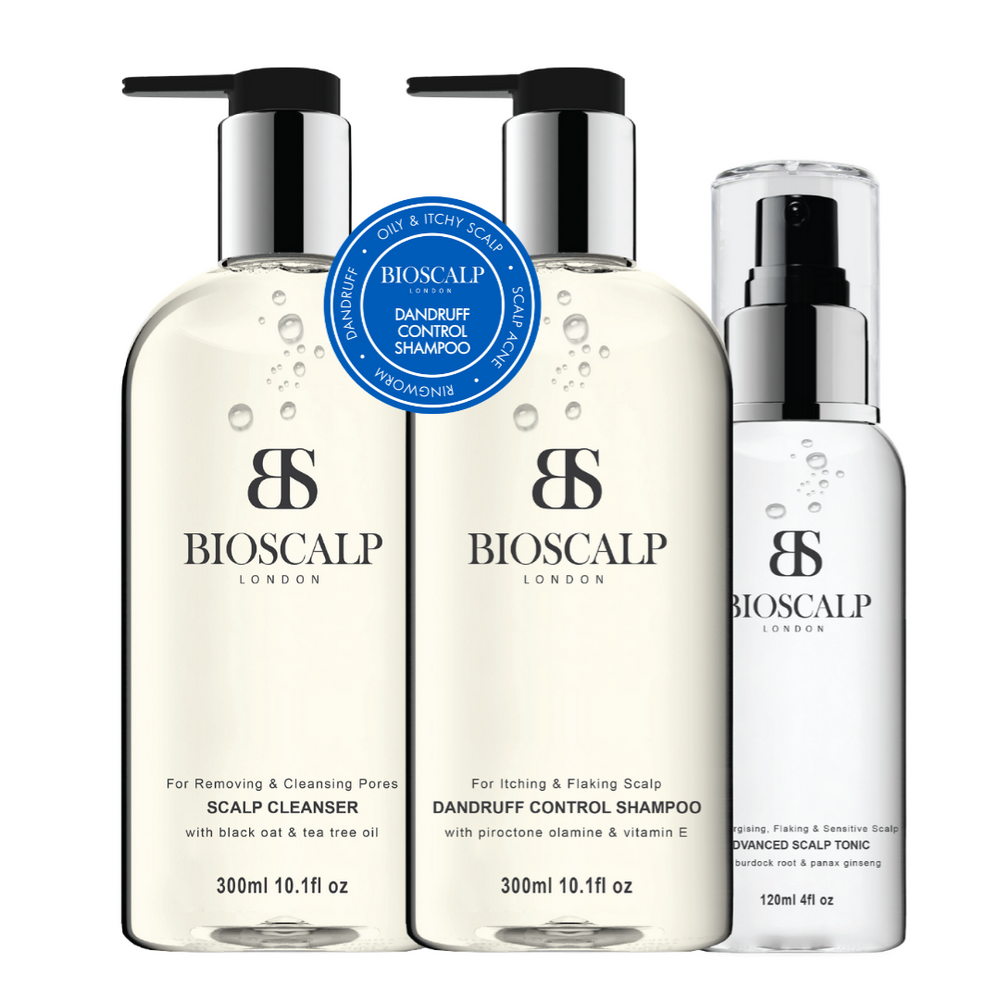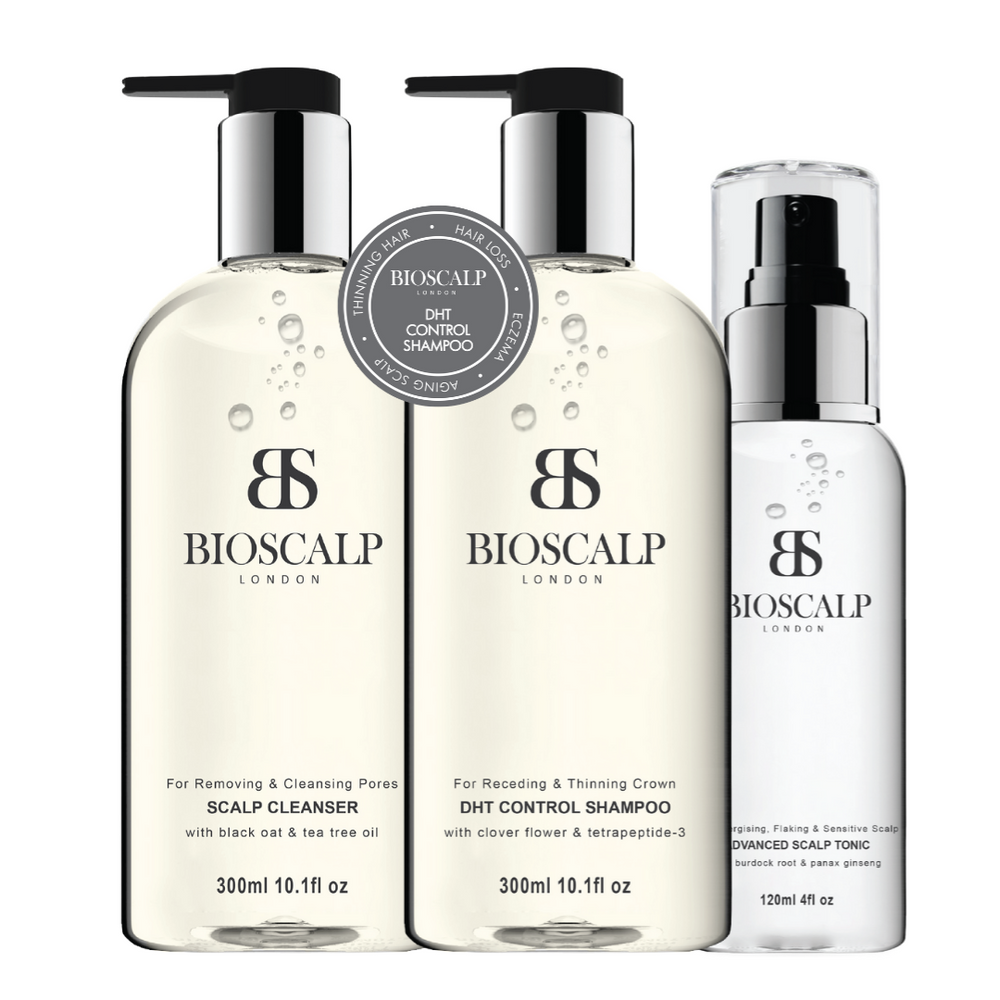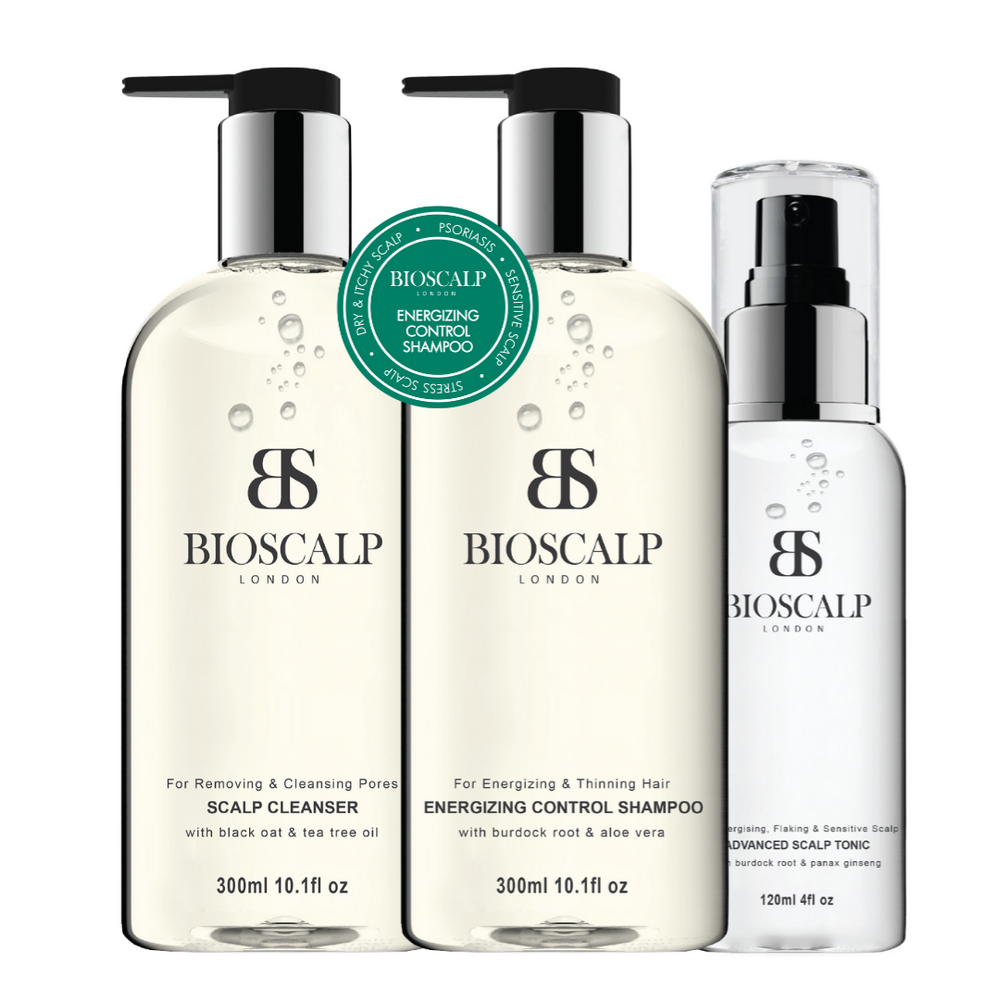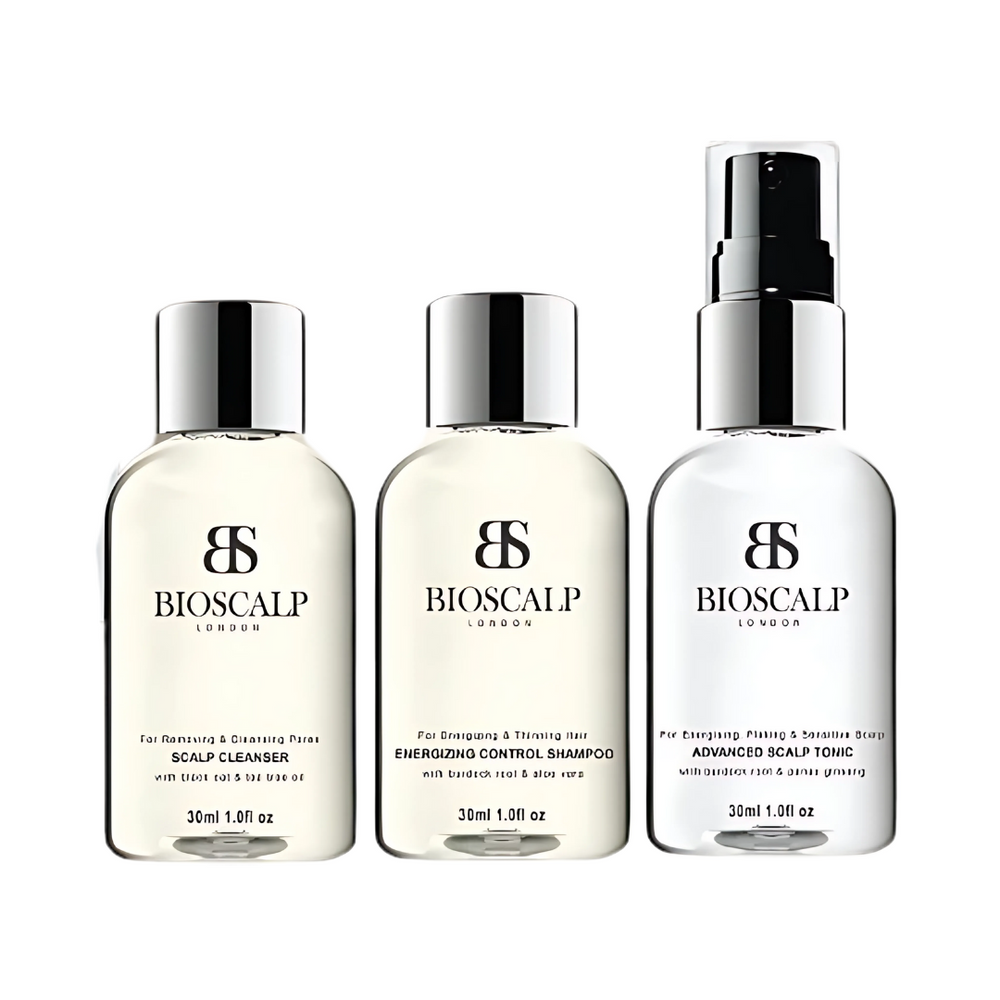If you're among the millions experiencing hair loss, you're not alone. Hair loss affects approximately 50% of men and 40% of women in Australia, with androgenetic alopecia (pattern baldness) being the most common cause. The emotional and psychological impact can be profound, affecting self-esteem and quality of life. However, there's unprecedented hope on the horizon. Regenerative medicine is revolutionising how we approach hair restoration, offering innovative treatments that work with your body's natural healing processes to restore hair growth.
Gone are the days when hair transplants and topical medications were your only options. Today's regenerative approaches target the root causes of hair loss at the cellular leve, stimulating dormant follicles and creating an optimal environment for healthy hair growth. Let's explore these groundbreaking treatments that are going to change lives.

Understanding the Science Behind Hair Loss
Before diving into treatment, it's important to understand what causes hair loss. Androgenetic alopecia, the most common form, occurs when hair follicles shrink due to sensitivity to dihydrotestosterone (DHT), a hormone derived from testosterone. Other causes include alopecia areata (an autoimmune condition), nutritional deficiencies, stress, and certain medical conditions.
Understanding your specific type of hair loss is crucial for selecting the most effective treatment. That's why many people start their journey with comprehensive scalp analysis and, when appropriate, supportive products like the BioScalp DHTI Control Kit, which can help manage DHT levels while you explore regenerative options.
Regenerative Medicine Approaches
Advances in Platelet-Rich Plasma (PRP) Therapy
PRP therapy involves concentrating a patient's own platelets from their blood and injecting them into the scalp. This delivers a potent cocktail of growth factors, such as platelet-derived growth factor (PDGF) and vascular endothelial growth factor (VEGF), directly to hair follicles. The aim is to stimulate hair regrowth, improve follicular activity, boost hair density, and slow further hair loss.
Recent meta-analyses and studies in 2024 consistently confirm PRP's ability to activate dormant hair follicles, improve scalp health, and deliver noticeable, long-lasting results for both men and women dealing with various forms of alopecia, including androgenetic alopecia and telogen effluvium. A groundbreaking 2024 meta-analysis of 10 randomised controlled trials specifically focused on pattern baldness revealed a significant increase in hair density, with a mean difference of 25.09 hairs per square centimetre, an effect particularly notable in male patients. Women undergoing PRP therapy also experienced a noticeable improvement in hair thickness, quality, and a reduction in shedding.
A limitation highlighted in research is the variability in PRP preparation methods across different studies, which may impact the overall consistency and magnitude of hair count improvement. While effective for early hair thinning, its efficacy may be limited for advanced hair loss.PRP remains a trusted and increasingly validated non-surgical solution in hair restoration, with ongoing research focused on refining formulations and delivery methods for even better outcomes. Its cost-effectiveness and minimal side effects contribute to high patient satisfaction.
Many patients combine PRP therapy with daily scalp care routines, including specialised products like the BioScalp DHTI Control Shampoo, to maintain scalp health between treatments.
Exosome Injections: Mechanisms and Clinical Potential
Exosomes are tiny, cell-derived vesicles packed with bioactive molecules (e.g. proteins, lipids, nucleic acids) that act as intercellular messengers. They signal hair follicles to regenerate, prompting them to grow thicker, healthier strands of hair. They are considered a cutting-edge, minimally invasive alternative to traditional surgeries, described as virtually painless and requiring no downtime.
Exosomes are typically harvested from stem cells, often adipose-derived mesenchymal stem cells (hADSC-Exos). Research has shown that hADSC-Exos enhance dermal papilla cell proliferation and migration by inhibiting glycogen synthase kinase-3β and activating the Wnt/β-catenin signalling pathway (specifically via Wnt3a in DPCs), thereby counteracting the effects of excessive dihydrotestosterone (DHT). Through this mechanism, exosomes can regulate essential cellular processes, including proliferation, differentiation, and migration, affecting tissue homeostasis and regeneration.
Exosomal proteomic analysis has revealed conserved proteins associated with metabolism, extracellular matrix organisation, and cell cycle regulation. hADSC-Exos have demonstrated comparable efficacy to minoxidil in enhancing hair follicle regeneration in an Alopecia Areata (AA) mouse model. A clinical trial showed significant improvement in hair regrowth with an exosome-containing product extract (ECPE) compared to placebo, with no notable adverse effects. A case series also demonstrated significant improvement in hair length, density, pigmentation, and recovery of hair cuticle layers in patients with acquired trichorrhexis nodosa (ATN).
Exosomes offer several advantages over direct stem cell-based therapies, including a reduced risk of tumour formation, lower immunogenicity, and greater stability. Exosome therapy is emerging as a highly promising cell-free approach for hair restoration, applicable to conditions like androgenetic alopecia and even autoimmune disorders, with a favourable safety profile. While not yet FDA-approved for hair growth, multiple studies have demonstrated their efficacy in this regard.
Stem Cell Therapies: Adipose-Derived Stem Cells and Other Stem Cell Applications
Stem cell therapy utilises the body's own regenerative cells to stimulate new hair growth. The process typically involves collecting stem cells (often from fat or bone marrow), processing them, and then injecting them into the scalp where hair loss has occurred. These cells possess the unique ability to differentiate into various cell types and promote healing and growth in damaged areas, including hair follicles.
Adipose-Derived Stem Cells (ADSCs): Found abundantly in fat tissue, ADSCs are particularly noted for their ability to secrete a wide array of growth factors (e.g., IGFBP, PDGF, bFGF, EGF, HGF, VEGF) that stimulate hair follicle health and regeneration. They can improve blood flow to hair follicles, minimise inflammation that may hinder hair growth, and jumpstart dormant follicles for healthier, denser hair. Research also indicates that oxidative stress can potentiate the protective capacity of ADSCs against oxidative damage via Nrf2-mediated antioxidant responses, thereby promoting hair regrowth.
Current studies indicate that ADSC therapy for hair restoration can effectively increase hair density and thickness for some patients, especially when hair loss is caught at an early stage, with noticeable results often seen within three to six months. A clinical trial investigating adipose-derived stem cell (ADSC) secretome (bioactive molecules secreted by ADSCs) for androgenetic alopecia showed statistically significant improvement in hair growth parameters across all groups (minoxidil only, secretome only, and combination), with the combination group demonstrating the most substantial improvement by week 12. Side effects were minimal and reported only in the minoxidil-only group.
Mouse model studies also show that intradermally administering allogenic ADSCs, especially when supplemented with ATP, improved hair regrowth in DHT-induced AGA models. Male mice showed the highest intense/complete hair regrowth with low-dose ADSCs combined with ATP, while female mice responded best to medium-dose ADSCs with non-liposomal ATP.
Despite promising results, stem cell therapy is still considered experimental, and its effectiveness can vary widely based on individual factors such as age, the extent of hair loss, and underlying health conditions. It may also require multiple sessions, which can significantly increase costs (ranging from $3,000 to $10,000 per session). Stem cell therapies, particularly those utilising ADSCs, offer a promising, minimally invasive approach to natural hair regrowth by addressing the root cause of hair loss through regenerative mechanisms. The exploration of synergistic effects with compounds like ATP represents an exciting avenue for optimising these treatments.
The Future of Personalised Hair Loss Treatment
The increasing importance of targeted and personalised therapies is evident across these regenerative approaches. The development of JAK inhibitors specifically for the autoimmune mechanisms of Alopecia Areata and the novel molecule PP405 for androgenetic alopecia, which targets specific stem cell pathways, demonstrates a clear trend away from broad-spectrum treatments. Personalised care is a key trend, with advanced nutraceuticals and drug therapies catering to individual needs and underlying causes.
The acknowledged variability in patient response to therapies like PRP and stem cell therapy further underscores the necessity for individualised approaches. This suggests that future hair loss treatments will likely be highly individualised, moving towards a precision medicine model. Such personalisation will be based on a comprehensive understanding of the specific type of alopecia, its underlying molecular and genetic profile in each patient, and other patient-specific factors.

Combining Regenerative Treatments with Daily Care
While regenerative treatments offer exciting possibilities, maintaining scalp health between treatments is crucial for optimal results. Many patients find success combining professional treatments with at-home care routines. The BioScalp DHTI Control Kit provides a comprehensive approach to managing DHT levels and supporting scalp health, while the BioScalp DHTI Control Shampoo offers daily cleansing that complements regenerative therapies.
What to Expect Moving Forward
As we look toward the future, several exciting developments are on the horizon:
- Enhanced delivery methods: Researchers are developing new ways to deliver growth factors and stem cells more effectively to hair follicles.
- Combination therapies: Studies show that combining different regenerative approaches often yields better results than single treatments.
- AI-powered diagnostics: Artificial intelligence is helping identify hair loss patterns and predict treatment responses more accurately.
- Gene therapy approaches: Scientists are exploring ways to modify genes responsible for hair loss at the molecular level.
Taking the First Step
If you're considering regenerative medicine for hair loss, the first step is consulting with a qualified specialist who can assess your specific situation. They can help determine which approach, or combination of approaches, might work best for you. Remember, early intervention often leads to better outcomes, so don't wait until hair loss becomes severe.
While you explore your options, maintaining scalp health with quality products and a consistent care routine can help create the optimal environment for any treatment you choose. The future of hair restoration has never looked brighter, with regenerative medicine offering hope to millions who once thought their options were limited.
Summary Table
| Therapy | Platelet-Rich Plasma (PRP) | Exosme Injections | Stem Cell Therapy (e.g., ADSCs) |
| Process | Blood drawn, centrifuged to isolate platelets, injected into scalp | Tiny, cell-derived vesicles (often from adipose-derived stem cells) harvested, processed, injected into scalp | Stem cells collected (e.g., from fat or bone marrow), processed, injected into scalp |
| Target Mechanism | Leverages body's natural healing properties, boosting growth factors (PDGF, VEGF) to stimulate hair regrowth and improve follicular activity | Act as messengers, signaling hair follicles to regenerate; enhance dermal papilla cell proliferation via Wnt/β-catenin pathway; counteract DHT effects | Uses regenerative cells to stimulate new hair growth; ADSCs secrete growth factors (IGFBP, PDGF, VEGF) to stimulate follicles; mitigate oxidative stress via Nrf2 pathway; improve blood flow, minimize inflammation |
| Invasiveness | Minimally invasive; generally painless | Minimally invasive; virtually painless; no downtime | Minimally invasive; may require anesthesia |
| Sessions Needed | 3-4 sessions over a few months, then maintenance every few months | Not specified, but generally fewer than PRP due to potency | 1-3 sessions annually, depending on hair loss level |
| Approximate Cost/Session | $500 - $2,000 | Not specified, but often high | $3,000 - $10,000 |
| Effectiveness | Platelet-Rich Plasma (PRP)Effective in early hair thinning; significant increase in hair density (e.g., 25.09 hairs/cm²); improved thickness, quality, reduced shedding | Comparable efficacy to minoxidil in mouse models; significant improvement in hair regrowth; effective for hair shaft abnormalities; potential for androgenetic alopecia and autoimmune disorders | Shows promise for mild to moderate hair loss; can increase hair density and thickness; noticeable results within 3-6 months; combination with minoxidil shows best improvement |
| Common Side Effects | Minimal, with slight soreness or bruising at most | Reduced risk of tumour formation, lower immunogenicity, greater stability compared to stem cells; no notable adverse effects reported in trials | Minor swelling or discomfort at injection sites; variability based on individual factors (age, extent of loss, health conditions) |
| Current Status | Trusted, non-surgical solution; ongoing research to refine formulations; efficacy may be limited for advanced hair loss | Emerging, promising cell-free approach; not yet FDA approved for hair growth, but multiple studies demonstrate efficacy | Still experimental; effectiveness varies; potential for natural regrowth by addressing root cause; exploration of synergistic compounds (e.g., ATP) ongoing |
Conclusion
Regenerative medicine is transforming the landscape of hair loss treatment, offering personalised, minimally invasive solutions that work with your body's natural healing processes. Whether through PRP therapy, exosome injections, or stem cell treatments, these innovative approaches are helping people regain not just their hair, but their confidence and quality of life. As research continues and technology advances, we can expect even more effective and accessible treatments in the years to come.
The key is to start early, stay informed, and work with healthcare providers who understand the latest advances in regenerative medicine. With the right approach and realistic expectations, the goal of healthy, natural hair growth is more achievable than ever before.
References
- Alopecia Areata: Pathogenesis, current treatments, and future perspectives - UMK, https://apcz.umk.pl/JEHS/article/download/58241/41739
- Comprehensive Review on Hair Loss and Restorative Techniques - PubMed, https://pubmed.ncbi.nlm.nih.gov/40416167/
- Androgenetic Alopecia - StatPearls, https://www.ncbi.nlm.nih.gov/books/NBK430924/
- Alopecia Areata - StatPearls, https://www.ncbi.nlm.nih.gov/books/NBK537000/
- AI-Powered Insights From 1 Million Users Reveal New Trends in Hair Loss - Dermatology Times, https://www.dermatologytimes.com/view/ai-powered-insights-from-1-million-users-reveal-new-trends-in-hair-loss
- Discovery Reveals Potential Key to Reversing Hair Loss - UVA Health, https://newsroom.uvahealth.com/2025/02/19/discovery-reveals-potential-key-to-reversing-hair-loss/
- Hair Loss Treatment for Men: Breakthrough Options in 2025 - Alvi Armani, https://www.alviarmani.com/hair-loss-treatment-for-men-breakthrough-options-in-2025/
- Pelage's PP405 Demonstrates Efficacy in Phase 2a Trial - Dermatology Times, https://www.dermatologytimes.com/view/pelage-s-pp405-demonstrates-efficacy-in-phase-2a-trial-for-androgenetic-alopecia
- 2024 New Research On PRP Therapy For Hair Loss - Laser Medical Clinic, https://lasermedicalclinic.com/prp-therapy-hair-loss/
- Stem Cell Therapy for Hair Loss: What You Need to Know in 2024 - Kaayakalp, https://kaayakalp.com/blogpost/stem-cell-therapy-for-hair-loss-what-you-need-to-know-in-2024/
- Potential of mesenchymal stem cell-derived exosomes - PMC, https://pmc.ncbi.nlm.nih.gov/articles/PMC12149797/
- A Pilot RCT Evaluating Exosome Efficacy - PMC, https://pmc.ncbi.nlm.nih.gov/articles/PMC11943915/
- Mesenchymal Stem Cell Exosomes Therapy Case Series - PubMed, https://pubmed.ncbi.nlm.nih.gov/39582366/
- Oxidative stress and adipose-derived stem cells - PMC, https://pmc.ncbi.nlm.nih.gov/articles/PMC12147514/
- Hair regeneration in androgenetic alopecia using secretome - PubMed, https://pubmed.ncbi.nlm.nih.gov/40021536/
- Hair growth stimulated by allogenic adipose-derived stem cells - PMC, https://pmc.ncbi.nlm.nih.gov/articles/PMC12145629/









